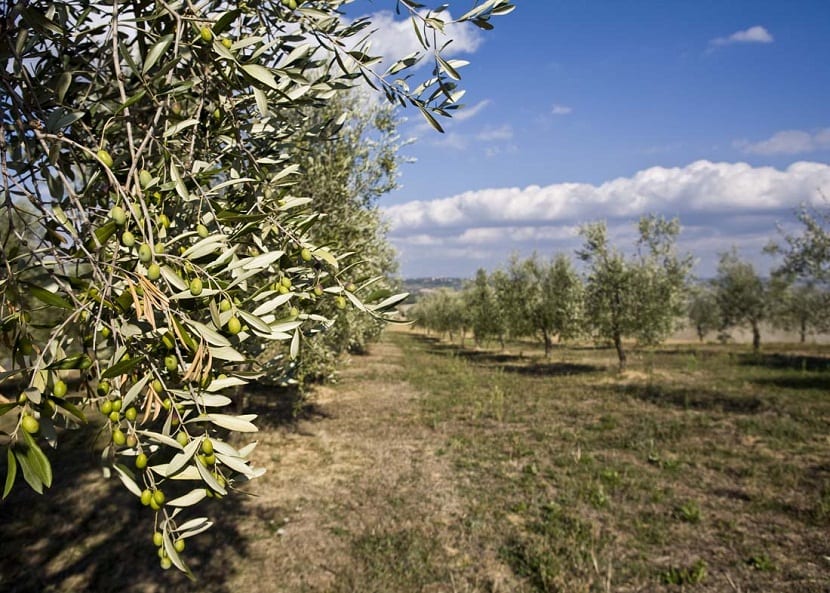
The hojiblanca olive tree also known as Casta de Cabra or Casta de Lucena, it is among the third variety in Spain as far as cultivation area is concerned.
The same has about 265 thousand hectares standing only behind certain varieties of olive trees, such as Picual with one million hectares and Cornicabra with 270 thousand hectares. The corresponding cultivation of the hojiblanca olive tree is distributed through the Andalusian regions of Córdoba with 116 thousand hectares until reaching Granada, which has 27 thousand.
From

The hojiblanca olive tree is originally from Lucena in Córdoba and its name is mainly due to the color of the leaves. The species of this type of olive trees usually have the underside of their leaves of a fairly light color, that is, white leaves.
Characteristics of the hojiblanca olive tree
The hojiblanca olive is highly valued due to the excellent quality of its pulp and also for its great rusticity. Resists drought conditions very well, and adjusts quite well to the types of limestone soils, in addition it can tolerate the cold product of the winter seasons.
The hojiblanca is a tree that has a medium to high vigor, its branches are very elongated as well as fruitful and a little pendulous. Its crown has a medium density and is very resistant to adverse conditions. Its leaves are lanceolate, of a medium width and elongated, the hojiblanca being a self-fertile plant. Its flowering is mid-late, while the pollen that it gives off is of medium quality.
The olive
The fruit of the hojiblanca olive has a size between medium and large, however its size is smaller than that of the fat olive and also the verdial species, in contrast to what happens with the Manzanilla Cacereña where the Hojiblanca olive is larger. It has an ovoid shape and is also proportionate, which makes it very attractive to use as a table olive. Upon reaching full maturity, her skin turns red with violet hues and the ripening process of this type of olives is late.
Uses
The hojiblanca olive tree is in great demand especially in Spain due to the hojiblanca extra virgin oil which can be extracted from its fruit, it is also widely used as a table olive. It is used as a table olive due to the excellent consistency of its pulp and they are made in black in the lively Californian style.
On the other hand, the olives from the hojiblanca are used to produce hojiblanca olive oil, which is highly appreciated for its characteristic flavor. On many occasions, the extracted oil is combined with other similar oils in order to improve not only its flavor but also its properties. And is that in this way an oil with a unique flavor is obtained and that it is also more durable. This oil is recommended by many specialists due to its excellent properties useful for the health of the human body.
Properties of hojiblanca oil

This type of oil it is used a lot as food, either to dress salad or to fry specific foods. Among its properties we can mention that has a fairly high content of unsaturated fatss, in addition to linoleic and oleic acids so that if it is consumed frequently it is possible to keep cholesterol levels in perfect condition.
Also, olive oil contains a good amount of vitamin E, helping to combat oxidative damage that appears at the cellular level. The consumption of this oil is recommended especially in children, to take better advantage of its properties.
Care and cultivation
The hojiblanca olive possesses the ability to take root in a medium way, making it possible to spread through the nebulization process. As we already mentioned before it is a very resistant tree that adapts to the most extreme conditions either due to heat or cold, it does not require specific care since it supports the hottest and coldest seasons.
Plagues and diseases
Despite being a very resistant tree, certain pests and enfermedades that can cause a lot of damage to the fruits.